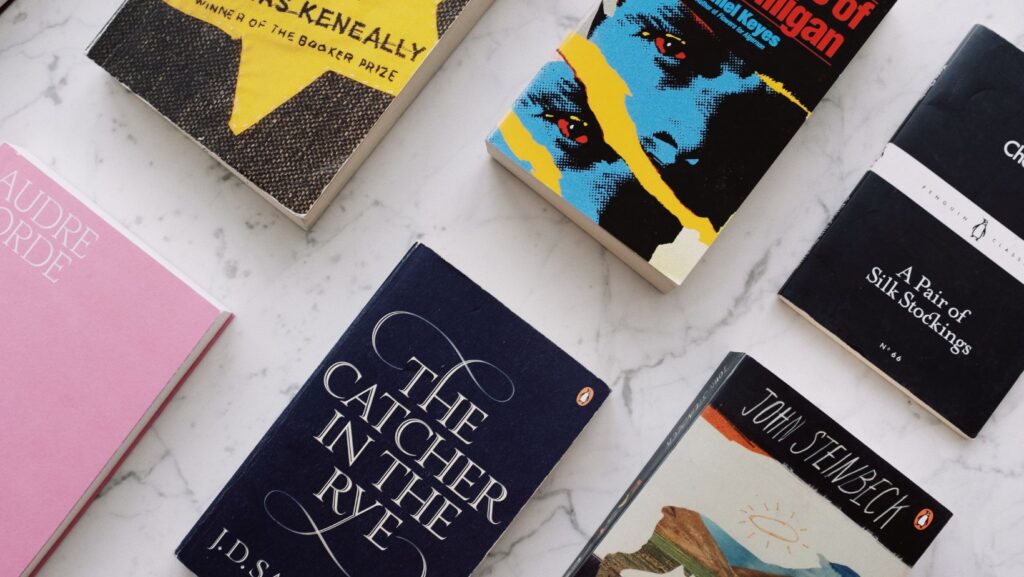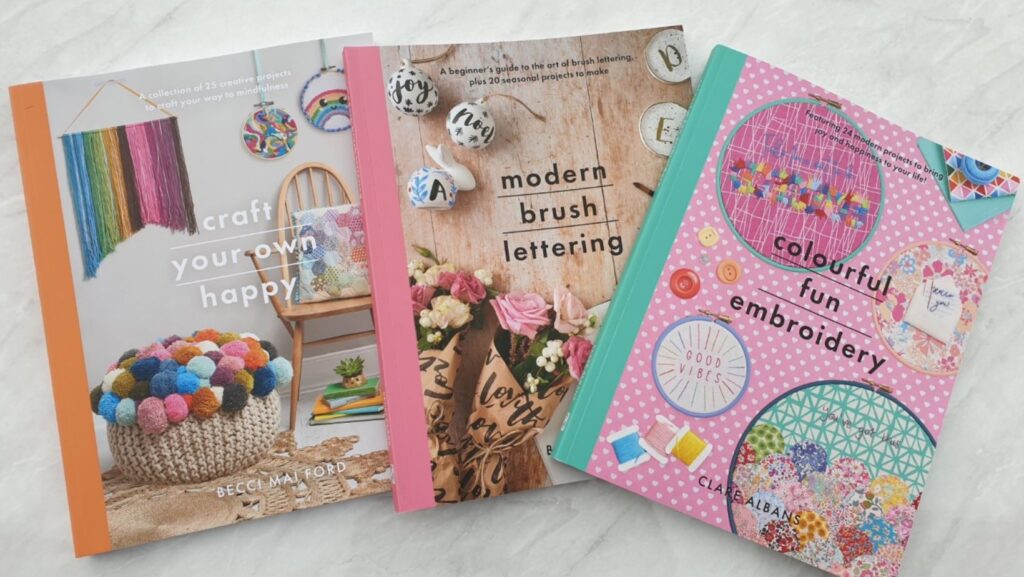The adage “Don’t judge a book by its cover” is a familiar phrase. However, the truth remains that every reader instinctively assesses Book Cover Design, whether they consciously acknowledge it or not.
It is widely recognized that authors have a mere 3 to 5 seconds to capture a reader’s attention; otherwise, the opportunity to make a sale is lost. Therefore, crafting an exceptional cover should be your utmost priority as an author.
While not all writers possess the knowledge to create an impeccable cover, we sought advice from Maria Secoy, author of the captivating On-Trail Love Adventures series, founder of AllWriteWell, and esteemed owner of the AWW Romance Writers Facebook Group, graciously shared her expertise to compile this comprehensive guide on cover design specifically tailored for authors.
Without further ado, let’s delve into the realm of cover design and unlock its potential.
Table of Contents
The Significance of a Book Cover

Unlocking the Factors That Influence Reader Choices
Several crucial elements play a pivotal role in shaping readers’ purchasing decisions. These factors encompass:
- Book awareness: The level of familiarity readers have with your book is primarily influenced by your diligent book marketing endeavors.
- Book description: Crafting a compelling book description is vital to captivate readers and pique their interest through the power of words.
- Cover design: A meticulously designed book cover possesses the remarkable ability to convey the essence of your book in a way that words alone cannot achieve.
The organic positioning of books in online bookstores relies on algorithms that analyze the conversion rate of a book’s sales page. In other words, the percentage of viewers who not only view the book but also make a purchase directly impacts how prominently your book appears in search results.
Marketplaces like Amazon and others strive to amplify the exposure of books that demonstrate strong sales performance. Consequently, book covers possess the potential to either hinder or propel your book sales, even as you concentrate on writing your next literary masterpiece.
This notion becomes evident when we examine a few illustrative examples. Taking a glimpse at Amazon’s bestseller list for Mystery and Suspense Romances, a discernible pattern emerges.
A noteworthy observation emerges when analyzing the covers of best-selling romance novels. With only two exceptions, all of these romance books covers feature a prominent character, showcasing at least half of their face.
From this, it becomes evident that if aspiring authors aim to secure a spot on the prestigious list of best-selling mystery and suspense romance books, it is highly recommended to incorporate a character with a significant portion of their face visible. Considering the target audience of romance novels primarily consists of women, it is reasonable to assume that the featured character on the cover will often be the male protagonist within the story.
Furthermore, examining these examples reveals that book titles within the romance genre stand out by emphasizing a particular word, capturing readers’ attention effectively.
Shifting the focus to the realm of best-selling mystery, thriller, and suspense novels, a comparable pattern emerges among their covers, further highlighting the importance of consistency and cohesion within a specific genre.
Unveiling Themes and Symbolism in Mystery, Thriller, and Suspense Covers
An intriguing observation emerges when examining the covers of best-selling mystery, thriller, and suspense novels: none of them feature prominent characters. While there might be a debatable case for “Say Her Name,” the depiction is not sufficiently clear to convey specific ideas to readers.
Hence, for authors venturing into the Mystery, Thriller, and Suspense genres, it becomes evident that the inclusion of characters should be avoided. Instead, opt for symbolic imagery that captures the essence of the book. Whether it’s a capitol building, smoky fog, or marriage rings, consider the symbol that best represents your story and feature it on the cover.
Furthermore, note the increased significance of color in these examples compared to the romance genre. Colour selection plays a vital role in creating an impactful visual impact. Now that you’ve gained insight from these examples and have a grasp of the nuances of book covers, let’s delve into our comprehensive guide on creating a best-selling book cover!
Crafting a Book Cover: Your Options and Considerations

When it comes to designing a book cover, authors have three primary options:
- Do it Yourself (DIY): Authors can choose to design the cover themselves using photo editing tools like Canva or Photoshop. However, this option is generally not recommended for most authors. Not only do you need access to design software, but you also require the skills and marketing knowledge necessary to create a cover that resonates with readers. It is important to acknowledge that expertise in cover design is not commonly possessed.
- Premade Book Covers: Another option is to purchase a premade book cover. This entails selecting a cover design that aligns with your book from a pre-existing collection. While this option offers convenience, it may lack the personalized touch and uniqueness that a custom cover provides.
- Custom Cover Design: The third option involves hiring a professional designer to create a custom cover tailored specifically to your book. This approach offers the advantage of expert design skills, ensuring a visually captivating cover that effectively represents your story.
Each option has its own advantages and drawbacks, and the choice ultimately depends on your individual circumstances and preferences.
DIY Book Cover Design Considerations
Designing your own cover should only be pursued by authors with the necessary tools and a background in cover design who seek complete control over the creative process.
It’s worth noting that the misconception that designing a cover yourself is the cheapest option is not necessarily true. Expenses can accumulate due to the cost of design software, licencing illustrations, and purchasing fonts. Design software subscription fees range from $12.99/m (Canva) to $21/m, while images for commercial use can cost around $80 to $100 each. Licencing a single font can range from $40 to $50.
Moreover, digital libraries like Canva often have limitations on font and image usage, such as restrictions on resale. Therefore, careful consideration is necessary when utilising such platforms to avoid potential copyright or usage conflicts.
If you opt for the DIY route:
It is advisable to explore book covers and design elements that resonate with you by browsing bookstores, online platforms, and platforms like Pinterest. The more book covers you find with appealing elements, the better. It is crucial to study examples that align with the genre and style you want your book to fit into.
Premade Book Covers

The second option available to authors seeking a Book Cover Design is premade covers. These ready-to-use book covers can be found in online libraries, where professional graphic designers offer templates.
I understand your hesitation: “Using a Book Cover Design for MY book? Surely not.”
However, you might be pleasantly surprised by the abundance and quality of premade Book Cover Design available. Browse through websites like BookCoverZone and discover designs that resonate with you. It is common for premade Book Cover Design to inspire authors and provide direction for their stories. These designers stay attuned to market trends, incorporating popular elements and designs that yield high conversion rates.
To use a premade cover, simply provide the title and author information to the designer, who will then incorporate them into the cover. Premade book covers offer a cost-effective option, typically ranging from $75 to $300 per design.
Who Should Consider a Premade Book Cover Design?
This option is ideal for authors seeking simplicity. New authors often find themselves overwhelmed by the various aspects of book production and may want to minimize complications when launching their books. Additionally, it is a favorable choice for cost-conscious authors, as it tends to be the most affordable option.
Hiring a Professional
The final option for authors in need of a Book Cover Design is to hire a professional designer and collaborate with them from start to finish. While this option is the most expensive, it provides a personalized touch.
If your custom cover incorporates stock photography, costs typically range from $200 to $500. However, if you require custom photography or illustrations, expenses can reach up to $1000 for a single cover.
When working with a professional designer, it is essential to provide them with a swipe file, which contains information for them to work from. Remember that designers are not mind readers and rely on your input. Include details such as fonts, color schemes, images, and a few examples of comparable cover designs.
If you’re unsure where to find a designer, platforms like Reedsy, Get Covers, 99Designs, Behance, Dribbble, and Upwork can be valuable resources.
Who Should Hire a Professional Book Cover Designer? This option is best suited for authors looking to establish an author business. These authors should already incorporate market research into their work and possess a strong understanding of their genre. It is particularly appealing for authors writing a series, as it ensures consistency in their artwork throughout.
Key Elements of a Book Cover Design
Before embarking on designing your dream Book Cover Design, it is helpful to understand the various elements that constitute a book cover. Let’s explore each aspect in detail:
Book Title
The title is the most prominent and obvious element of a Book Cover Design. It should be displayed in the largest font size possible. The placement of the title can be at the bottom, center, or top, depending on the design. It is advisable to keep the title short, ideally within 3-5 words. Using two or three fonts on the cover is generally recommended, and Google Fonts offers a wide selection of free and uncopyrighted fonts. To test the effectiveness of your title, try announcing it to people you encounter in daily life. If it’s clear, easy to remember, and sparks interest, you have a winning title.
Images
The graphic content on the Book Cover Design holds significant importance. Avoid cluttered visuals and ensure high-resolution images, preferably at least 300 DPI. Screenshots may not meet quality standards. Stock images can be used, but it’s crucial to consider copyright implications and download high-resolution versions. The legality of AI-generated images is currently under debate, so it’s advisable to refrain from using AI art until the matter is resolved.
By paying attention to these elements, you can create a captivating and compelling book cover that effectively communicates your book’s essence.
Book Cover Elements and Testing
Let’s delve into the topic of book cover colors and other essential elements. It’s crucial to choose colors that align with your genre and appeal to your target readers. Consider whether readers prefer brighter or darker tones, and select a focal color that captures attention.
The author’s name
It’s important to clearly attribute the book to you, but avoid using fancy fonts or cursive that distract from the overall cover. Typically, the author’s name is placed either at the top or bottom of the cover, depending on other design elements.
Taglines
Taglines are optional, but can enhance the cover by providing supporting text and generating interest in the book. They can also indicate if the book is part of a series. It may be wise to add a tagline once you have more experience as an author.
Including editorial reviews or testimonials
On the Book Cover Design is recommended for more seasoned authors. If you have a favorable review from a major publication, it can be placed on the cover as long as it doesn’t overshadow other elements and is displayed in a similar font size to a tagline.
The dimensions for both e-books and physical books.
It’s advisable to publish in both formats, as the costs are similar. Ebook covers must follow a 1.6:1 ratio, while paperback dimensions can vary. Amazon suggests 6×9 as the most popular size, but readers often prefer 5×8. Optimal print dimensions depend on the genre, with 5×8 or 5.5×8.5 being common choices. Consider 6×9 if you’re writing an epic fantasy and prefer longer pages to shorten the page count.
Regarding hardcovers, they are usually reserved for special editions funded through platforms like Kickstarter. In general, hardcovers don’t sell as well as paperbacks. The choice between matte and glossy finishes comes down to personal preference. Glossy finishes tend to be more durable, while matte finishes photograph better.
Testing your Book Cover Design
One effective method is to post it on social media and ask for feedback. Avoid seeking opinions from friends and family, as their biases may not align with your target readers. Instead, engage with reader Facebook groups or use hashtags like #Bookstagram and #BookTok to gather feedback from your audience.
By considering these elements and conducting thorough testing, you’ll be well-equipped to create an impactful and appealing Book Cover Design.
Examples of Successful Cover Designs
Let’s explore some examples of book covers that have achieved success and discuss their notable features.
The Housemaid
Our first example is the book cover for The Housemaid, written by Freida McFadden. With over 125,000 reviews, McFadden has clearly hit the mark with this cover design.
The key feature of this cover is its clear and clean font. McFadden didn’t attempt to go overly fancy with the typography. Additionally, the inclusion of a tagline that says, “From behind closed doors, she sees everything,” adds to the cover’s appeal. It perfectly aligns with the imagery of a woman’s eye peering through a keyhole on the door. The beauty of this book cover lies in its simplicity.
Things We Never Got Over and A Not So Cute
The covers for Things We Never Got Over and Not So Cute are excellent examples of illustrated romance covers. Both covers feature unique fonts with author names that are crisp and easy to read.
The titles dominate the covers, but the designers got creative with the fonts. They used primarily two fonts, which is a best practice in cover design. Lucy Score technically has a third font, but it’s so small that it’s barely noticeable. Both covers employ clear primary colors, such as blue, to keep the main focus sharp.
Lucy Score’s cover incorporates daisies, which tie into the theme of “He loves me, he loves me not.” Megan Quinn’s cover features a handsome man on a couch, accompanied by heart and cupid designs. The key takeaway from these covers is that they don’t try to reveal everything the books have to offer. Instead, they highlight one central focus.
The Stopover by TL Swan
Next, let’s examine the cover of TL Swan’s book, The Stopover. While it may not have been as widely successful as the previous examples, with almost 60,000 reviews, it proves that a simple cover design can make an author achieve six-figure success.
This cover can be considered a beginner’s design, and that’s a positive aspect. Any new author can replicate this approach. It features a stock photo of a guy against a black background. The author’s name is prominently displayed at the bottom, using a clean and clear font from Google. The color scheme is kept simple, with contrasting colors that work well together.
These examples demonstrate that successful covers don’t necessarily require complex designs or extravagant elements. By focusing on simplicity, clear fonts, and a central theme or image, authors can create impactful covers that resonate with readers.
Frequently Asked Questions
Is it advisable to re-cover my book?
I suggest authors consider re-covering their books every six to ten years to ensure they stay up-to-date with Book Cover Design trends. This gives you the opportunity to make improvements based on any feedback you’ve received over the years.



